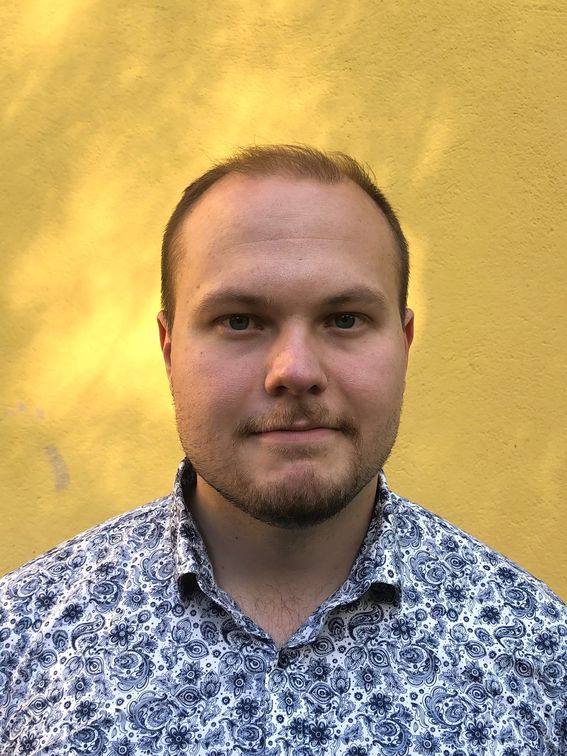Dissertation: "Slowing-down efficiency" could increase well-being of older people – as well as prevent chaos at emergency rooms

The management of Finnish social and health care is often fragmented, says doctoral researcher Olli Halminen from Aalto University's Department of Industrial Engineering and Management. He has examined how older people’s services in Finland function as a whole, and formulated suggestions for improvement.
‘The goal of the research project was to show what kinds of new information we could find – and utilize in organising the services – if we could examine registry data covering an entire service-providing area, such as a municipality or a wellbeing service county. This would allow us to see what’s happening under the hood: what services an individual person uses and how the service structure affects the use of the services,’ says Halminen.
In his doctoral dissertation, Halminen analyzes data that describes how people over 75 use care services in 65 Finnish municipalities.
Older people typically live in one place, mainly home or a nursing home, and additionally use short-term services from, for example, a health care center or an emergency room. Moving from home to a long-term care facility is particularly expensive, and therefore preventing or postponing this is, based on Halminen's research, a particularly effective way to reduce the cost of care.
‘Well-timed services can provide the health care system with "slowing-down efficiency". Services, when given at the right time for the right person, delay or even prevent the long-term deterioration of health and the transition to heavier and more expensive service modes. Slowing down can be accomplished, for instance, by bringing high-quality services to people’s homes or by enabling a balanced patient-care relationship with the local health care center,’ says Halminen.
In one of Halminen's case studies, for example, it was found that starting medication for Alzheimer patients within three months of diagnosis significantly reduces both the need for 24-hour care and the risk of death.
‘Furthermore, long-term living facilities such as the home should have an adequate level of services. In this way, the patient would not need, for instance, the frequent visits to the emergency room that we can currently see crowding the healthcare system,’ Halminen says.
‘At the moment, safety wristbands and similar support methods for coping at home are constantly being developed, but a lot of additional research would be needed on their cost-effectiveness’.
Halminen also emphasizes that it is important to harmonize the criteria for access to 24 hour care across the country, for both human and financial reasons.
It has been estimated in a previous study that such harmonization could bring savings of up to hundreds of millions.
More resources for the care of dementia patients
Based on his data, Halminen was also able to calculate which diseases will take up more money and resources in the future. Such calculations will make it easier for decision-makers to prepare not only financially but also, for instance, through personnel training.
‘We were able to calculate the cost for each hospital visit and day at a care facility, and so evaluate cost trends and identify patient groups with particularly expensive treatment’, says Halminen.
In research literature, cancers have often been considered the most expensive disease group to treat, at least when looking at the hospital costs of the patient's last year of life. However, Halminen showed that when services other than just the hospital are included in the calculation, cancer patients fall to third place. Most money was spent on the treatment of dementia patients, and 68 percent of their costs were incurred in social care. Cardiovascular diseases came in second place.
"When we look at the average age of those who die of diseases, cancer patients are the youngest and dementia patients the oldest group. Therefore, as the population ages, we should be prepared to transfer resources from health care to social care," says Halminen.
Using his extensive data set, Halminen outlined a model that describes the service system and helps find ways to improve it based on analytics. He believes that his research can provide Finland’s new wellbeing service counties with direction and guidelines for developing their own services.
"Managing services for older people is very difficult and a big challenge in terms of costs, but by analyzing these systems, cost-effective operating methods can be found. This kind of work requires resources, but would probably turn out to be profitable," says Halminen.
Olli Halminen, M.Sc. (Tech) will defend his dissertation on January 20. The title of the dissertation is Analyzing the Performance of Meso-level Care Systems Including Long and Short Term Services. Lill Sverresdatter Larsen, president of the Norwegian Nurses' Association, acts as his opponent.
The data been collected as part of the project Elderly People's services: use, costs, effectiveness and financing - ELSE
Contact information:
[email protected], +358400563730
Good care with fewer resources - a virtual care operator streamlines the patient journey for people with multiple and long-term conditions
The MASSE project has created the design principles for a system that will improve the efficiency of care, especially for chronic and multimorbid patients who use healthcare services the most.

- Published:
- Updated:
Read more news

In low-hierarchy organisations, even key policy issues are discussed in Slack
In a recent study, Aalto University alumn Lauri Pietinalho, a visiting scholar at New York University's Stern School of Business, and Frank Martela, an assistant professor at Aalto University, investigated how low-hierarchy organisations deal with shared policies in confrontational situations and how authority functions within them.
Getting bacteria into line
Physicists use magnetic fields to manipulate bacterial behaviour
Nordic researchers develop predictive model for cross-border COVID spread
The uniquely multinational and cross-disciplinary research was made possible by transparent data-sharing between Nordic countries.